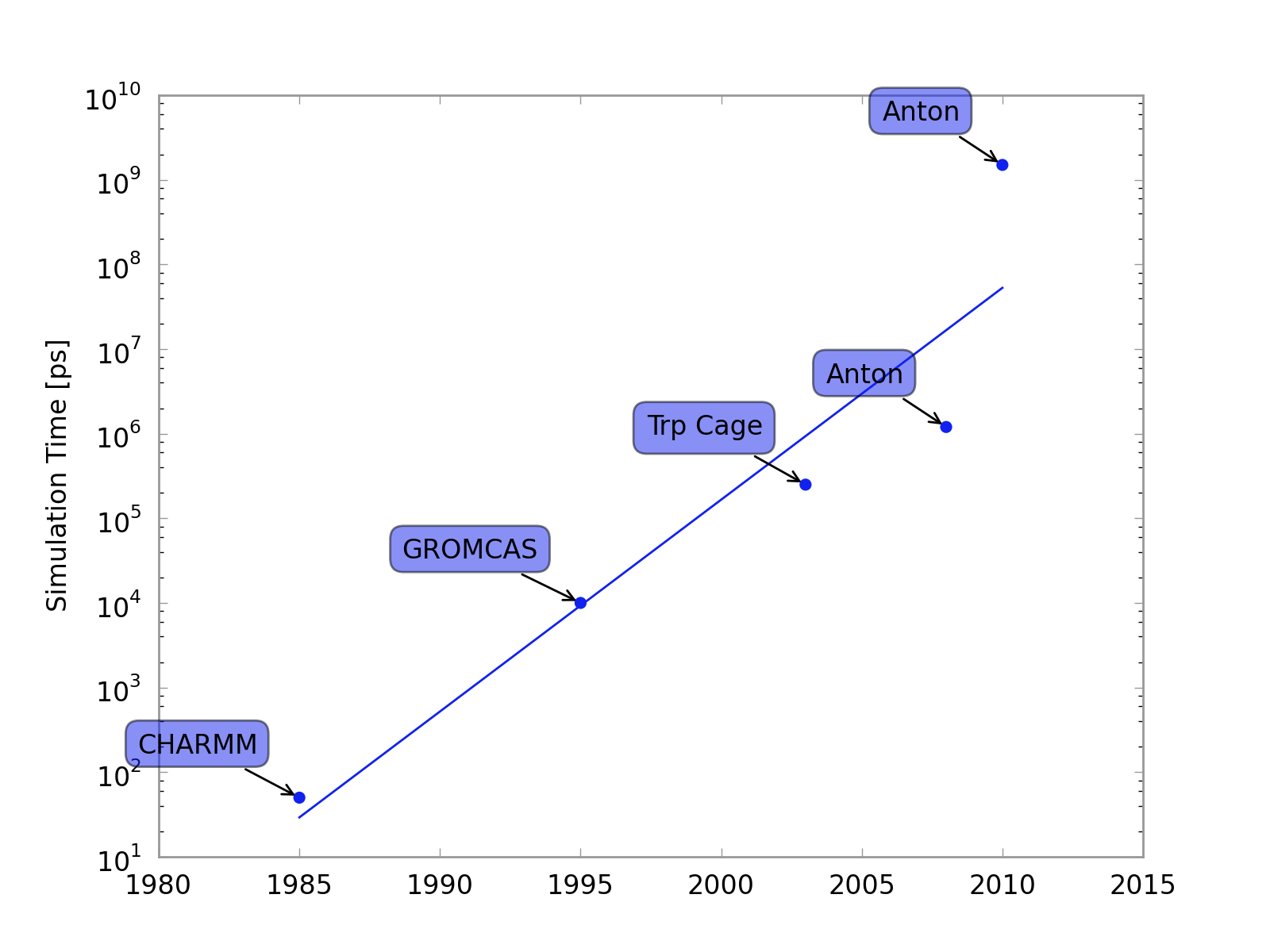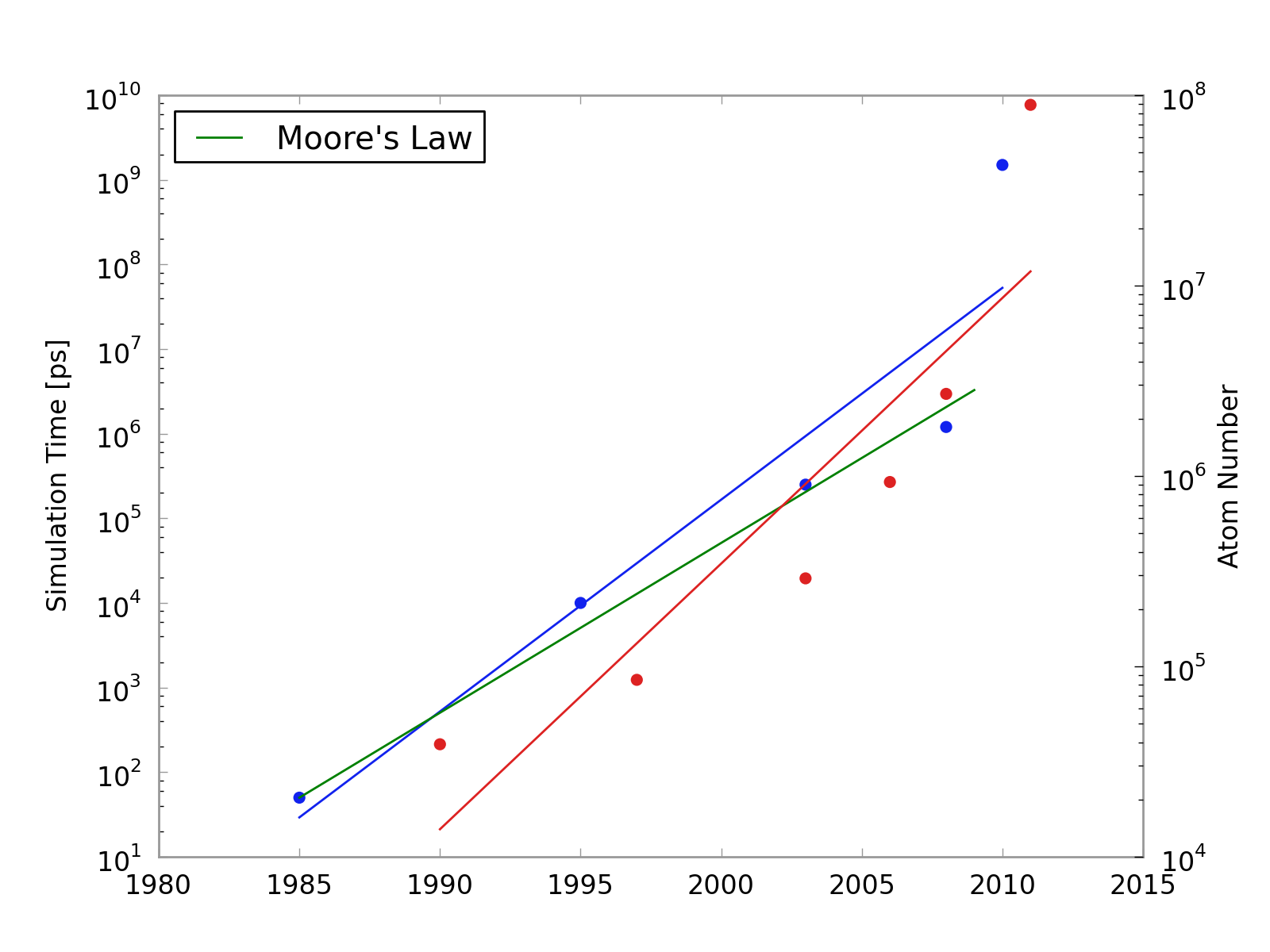In my day job, molecular modeling, I simulate the position and velocity of every atom in biological molecules. As you can imagine, doing this yields nearly complete information about whatever biological system I'm studying and allows me to predict the behavior of proteins. Well, that's the theory. It's more complex than that and often fails spectacularly in practice. Ignore that for now. Let's focus on the systems that can be simulated. In 1982 CHARMM, one the first molecular dynamics tool capable of simulating tiny proteins, was released. It was possible to simulate a small protein for one tenth of one billionth of one second. Now we can simulate a protein for one thousandth of a second. That's an increase of 10^7 in the speed of molecular simulations in about 30 years. In 1990, we were able to simulate lysozyme, a small protein, for few billionths of a seconds. Now we can simulate a virus for a few billionths of a second. That's an increase in about 10^4 mass of molecular simulations in 30 years. Assuming continued exponential growth (see plots below), here are my upcoming interesting milestones in computer simulation
Here's the data used to make these predictions:
This post is a work in progress and I'll throw the links to the sources up when I have a chance. The key numbers are doubling time in timescale of simulations every 14 months and atom number/mass every 26 months.
| Year | Event |
|---|---|
| 2023 | The first simulation of every atom in a ribosome for 10 milliseconds |
| 2038 | The first simulation of every atom in a virus for 1 second |
| 2131 | The first simulation of every atom of a cell for 1 hour |
| 2191 | We can simulate every atom of every cell in a heart for 1 heartbeat |
| 2227 | Every atom of every cell in a human brain can be simulated as fast they move in a human brain |
Here's the data used to make these predictions:
This post is a work in progress and I'll throw the links to the sources up when I have a chance. The key numbers are doubling time in timescale of simulations every 14 months and atom number/mass every 26 months.


